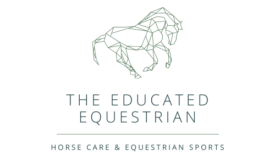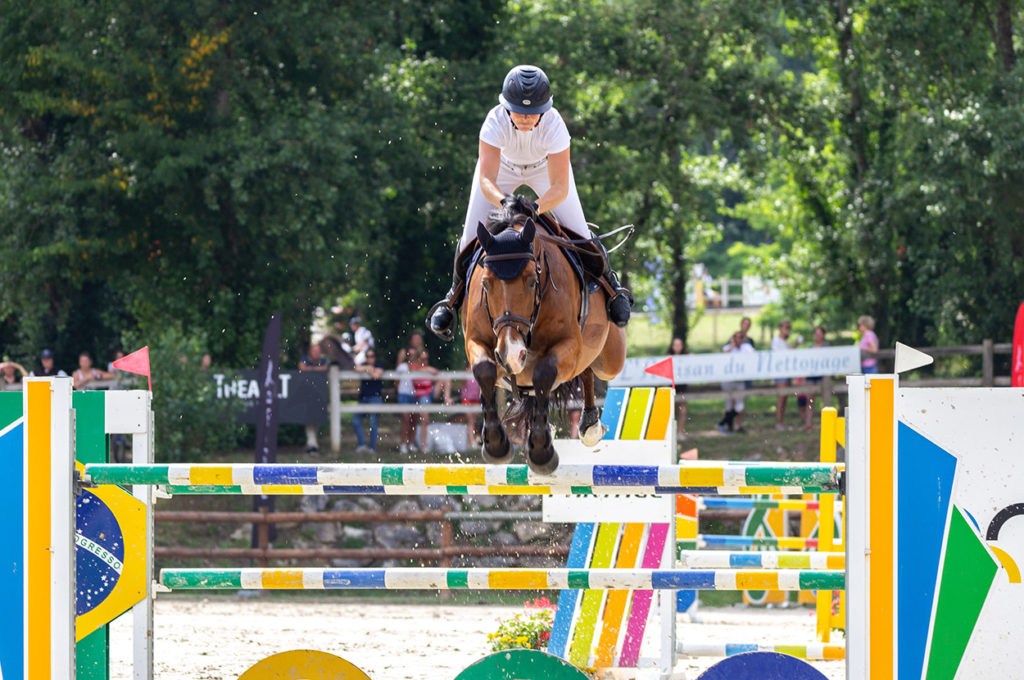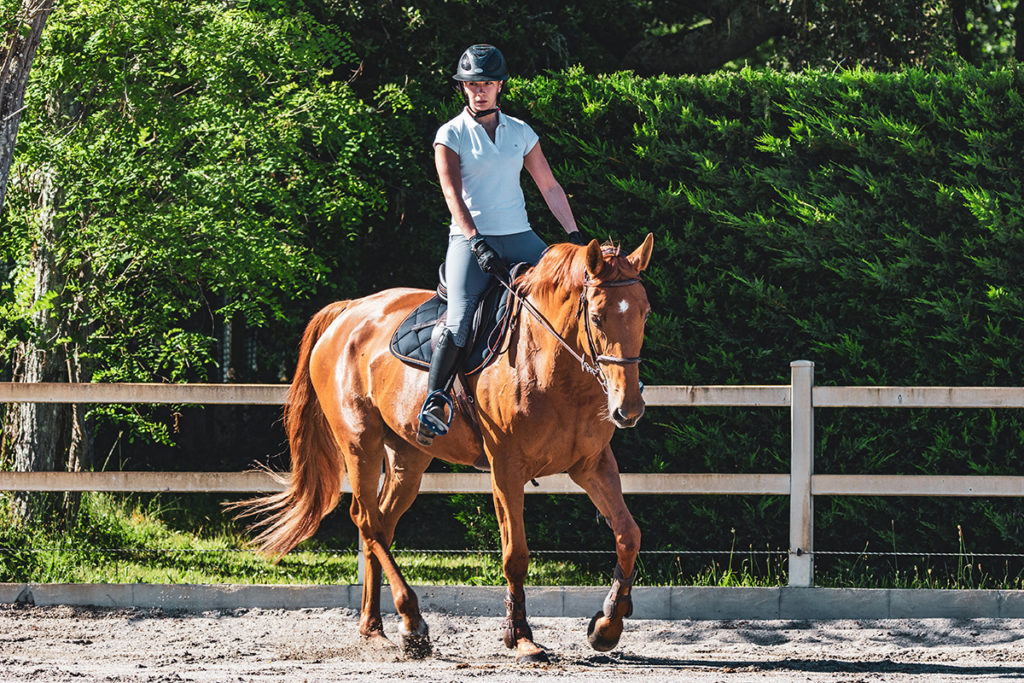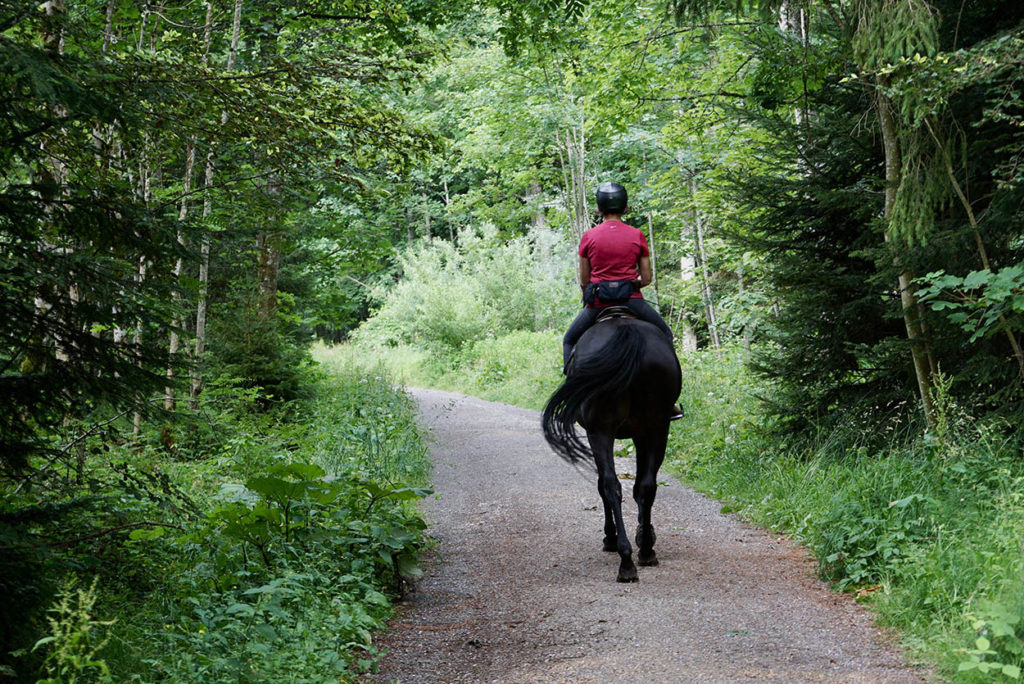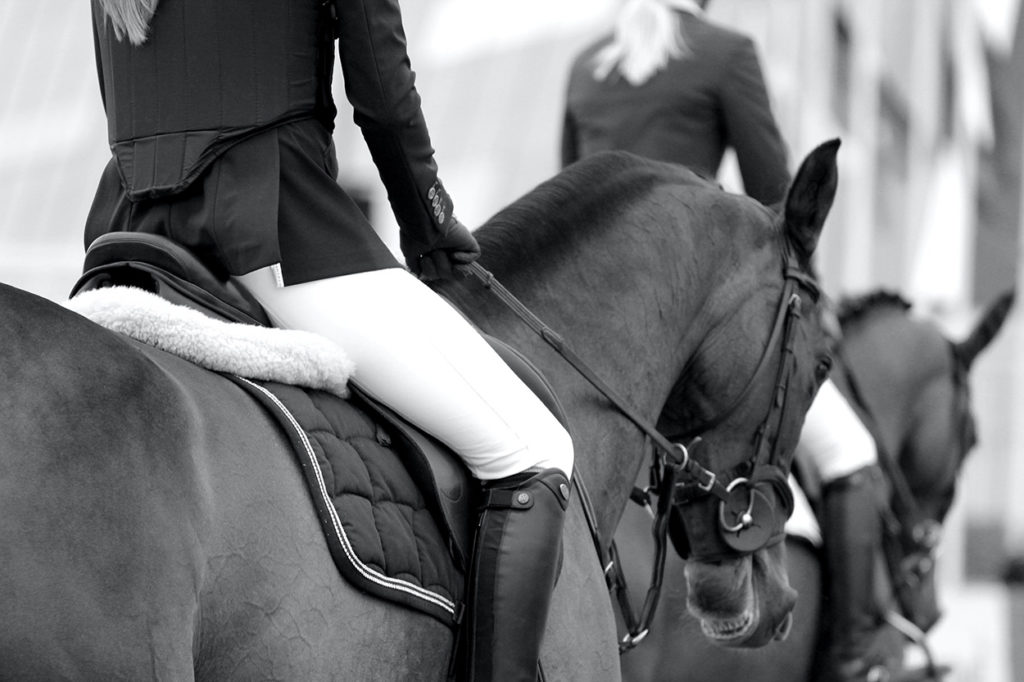Learning to jump is a part of horseback riding that riders of all ages anticipate. However, you shouldn’t be jumping into it within the first month you’re in the saddle. Jumping can quickly become dangerous for both you and the horse if you don’t have the proper experience and if you aren’t under professional supervision. You should also ensure you’re trainer is moving you forward at an acceptable pace.
So, how many riding lessons do you need to take before you begin jumping? We’re diving into the answer here.
How Many Riding Lessons Before Jumping—It Depends
If you’re a total beginner expect to learn jumping around twelve months into taking consistent lessons.
Some barns will start their riders over fences much sooner (at around two months to six months). This is often done because the facility wants to make its clients happy. In most situations, this is dangerous and can result in more harm than good as riders do not have enough developed skills to safely ride over fences at these early stages. Other barns, you may find, have the opposite policy and require a set amount of lessons or consistency over a period of time before introducing the student to lessons over fences.
Age
An adult rider naturally has more control over their body, longer legs, and an overall ability to control their bodies better. Children are still figuring everything out and don’t have as much eye-hand coordination when they are quite young nor do they have as much leg strength to secure a proper and secure position over fences. This makes more complex riding (like jumping) out of the question in most situations.
Often, age will be an indicator of how long it will take you to reach jumping. A kid who starts riding at five likely will not be doing over-fences lessons for a few years.
Facility
Every riding facility has a different philosophy. You’ll find this is true of literally every aspect of riding and horse care. Your best bet is to secure your spot in a lessons program at a facility whose ideologies align with your own when it comes to riding progression.
It’s easy to spot facilities to introduce way too much, way too fast to students who aren’t prepared. Avoid these facilities at all costs. If you feel your instructor is pushing you past your comfort zone in a way that is dangerous, don’t be afraid to speak up (or relocate to a new barn if necessary).
You will find that many horse camps will introduce jumping rather early. This is because they are held over a few or several weeks and feel the need to end the camp with riders who visually appear to accomplish more. Depending on the level of the rider coming into the program this could result in riders learning to jump too quickly. If new riders display clear control and a solid seat at the start of camp it will be safer to introduce ground poles, cavelettis, and small cross-rails equivalent to their experience.
Natural Ability
As with anything, some people are just naturals. Some riders will naturally pick up on skills quicker and progress far faster than their fellow riders.
Things to Consider When Learning to Jump
When you’re first learning to jump, keep the following things in mind.
Safety Should Always Comes First
Safety is the most important thing to keep in mind when learning to jump. You want to have a solid foundation of riding chops and enough skill to know how to react if your horse spooks, bucks, or otherwise gets silly when going over fences.
Solid jumping starts with solid flatwork. Even though jumping may seem more fun you need to first put in the work on the flat.
Set a Pace That’s Comfortable—Don’t Rush It
Never allow yourself to be pushed past your limits. Jumping to some degree will seem a bit nerve-wracking when you’re first learning but it shouldn’t terrify you. You also shouldn’t feel like you’re moving too fast without understanding the baics. Don’t be afraid to go back to the ground poles to establish a better understanding of counting strides or developing your half-seat.
Start With Simple (Ground Poles, Then Cavelettis, Then Crossrails, Etc.)
You shouldn’t go into your first lesson learning to jump by angling your horse at a 2-foot fence and hoping for the best. That’s a recipe for ending up injured and developing a fear of riding.
Every instructor and facility will have a slightly different plan for teaching jumping. This will also tend to vary from student to student as everyone’s learning progression is unique to them.
Often you will learn how to trot over ground poles and then cavelettis first. This will allow you to learn the feeling of your horse moving slightly differently while practicing your half seat. You should also be introduced to half-seat on the flat at a walk, trot, and canter before attempting to go over fences.
From there you will be introduced to a higher caveletti height or a small cross-rail. You’ll likely learn how to trot and canter these fences. From there you’ll learn how to jump a line, steer your horse through a small course, and begin tackling taller fences.
The most important thing is that your instructor isn’t rushing the process, you feel comfortable at each stage, and you’re working on your form along the way.
Dangers of Learning to Jump Too Soon
If you’re thrust into jumping too soon or decide to take matters into your own hands, you’ll be introducing yourself to three major dangers: injury, bad habits, and fear.
Injury
Horseback riding is already a decently dangerous sport, especially when not approached with sensibility and professional guidance. When you add height into the mix you’re only upping the chances of injury. When you add height without expert guidance you’re betting on getting hurt.
If you learn to jump too soon, either because you pursue it on your own or because your trainer is pushing you too far too fast, you may wind up falling and injuring yourself.
Developing a solid seat before you begin jumping is important for keeping you in the saddle. A rider with a strong seat will be able to anticipate and sit through falling behind, getting ahead, and running out.
Bad Habits
Without a solid foundation or proper guidance, you’re bound to pick up bad habits. Bad habits are much harder to break than good habits are to develop. Starting off right from the start is the best option.
Fear
If you begin jumping too soon and have a bad experience you’re more likely to develop a fear of jumping and possibly riding altogether.
Remember: You Don’t Have to Jump
Not all riders are interested in jumping. Not all disciplines have jumping as the main focus.
As someone who initially began in the western world, jumping was out of the question until I switched over to an English-focused barn. Before I made the switch my focus was on learning trail obstacles and reining fundamentals which aligned with my riding and showing goals. When I made the switch to English it made sense to pick up jumping.
You may find yourself in a similar situation where you approach jumping later on. You might decide you have a cap on how high you’d like to jump. Or you might decide you’re interested in a discipline where jumping isn’t a focus. Whatever your reason, it’s valid. Don’t feel pressured to approach a part of riding you aren’t interested in unless you feel it would make you a better rider.
Warning: Natural Obstacles Are a Different Beast Altogether
You may be familiar with cross-rails and cavelettis as a rider new to jumping. This may boost your confidence when coming across obstacles on the trail. However, it’s important to note that even if a natural jump seems smaller than what you’re used to in the ring, it shouldn’t be sneered at. Natural obstacles don’t break away the same way jumps in the ring do. This can potentially present dangerous situations. You should approach natural obstacles with the respect and caution they deserve so as to avoid injury to you or your horse.
